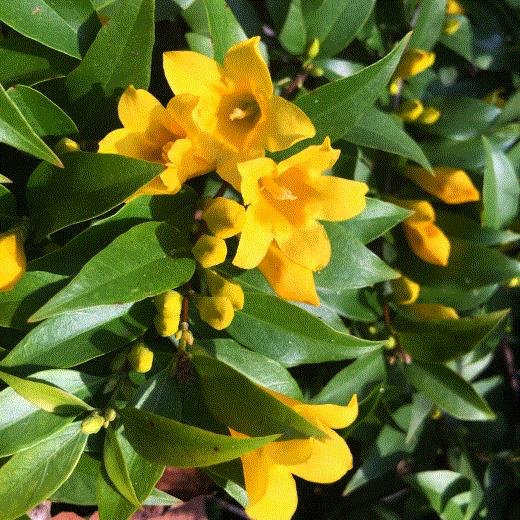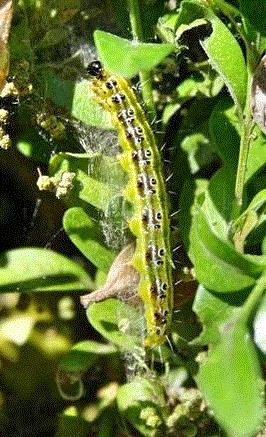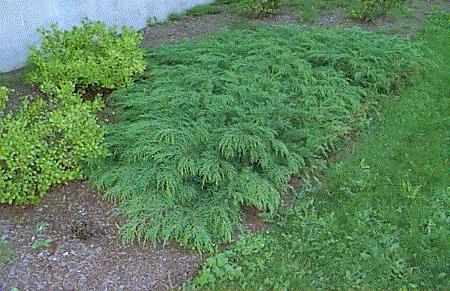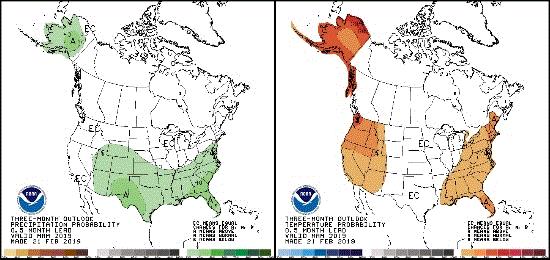Free College Courses—Online
In the last newsletter, I covered a number of free resources. The one that I regret having to leave off (due to a lack of space) was related to taking free college courses online. Yep—more and more college courses are being offered online for free and can effectively be used as continuing education opportunities.
Granted, free courses are “audit-level,” which means you get to listen to lectures, but don’t participate in exams or receive formal credit for taking them. But, oftentimes, that’s perfectly fine if all you’re trying to do is brush up on a topic.
Let’s say, for example, you simply want to brush up on finance. There are oodles of free online courses that tackle many niche topics of finance. Or maybe you want to learn new management and leadership skills? You can do that, too.

A nice feature is the ability to search clases. If they only had a 'How to Make Your Wife Happy Constantly' course ... I would be in business!
Of course, you can also take many course series for a certificate, whereby you do all assignments for a grade. But this is where you start having to pay, usually around $50 and up per class. Anyway, my favorite site to browse free college courses is Class Central. This site serves as a clearinghouse for many universities and online degree programs, and yes, I have been known to binge-learn via online college courses. It beats binge-watching Netflix!

Carolina Jessamine
Thank goodness spring is finally starting to wind up (minus the blizzard that's caused a cold mess in the Rockies and Midwest), as I was sure missing color in the landscape. And one of the first harbingers of spring (to me) is Gelsemium sempervirens (Carolina Jessamine). It’s one of those rare vines that's moderately contained—in other words, doesn't try to consume all that surrounds it. Because of that, it tends to work well along fence lines or on arbors and pergolas.
And it’s quite beautiful, with faintly fragrant yellow blooms emerging in late February to early April (depending on your location) and holding for several weeks (unless an unexpected freeze comes along).

Nothing beats a crisp color on clean foliage ... and that's what you get with Carolina Jessamine.
While native to states from Texas and Arkansas east to Virginia and Florida (USDA Zones 6 to 9), I've seen it grown successfully (if sited in a protected location) as far north as New York City. While I can’t prove it (based upon research), many plant nerds in the northeast swear that the cultivar Margarita is more cold tolerant and may be worth a try if you’re in Zone 6. I’ve also seen some nice specimens in the Pacific Northwest, although it may be a little harder to source in the west.
As for other cultivars, my favorite is Pride of Augusta, which has double flowers (but not as many flowers, which is a drawback). Another drawback is that it's pretty toxic to mammals, so try to avoid using it in your next mint julep.

Box Tree Moth Findings Confirmed in Canada
This one comes to you from Jennifer Gray and the good folks at AmericanHort and the Horticultural Research Institute. I’m not going to chime in on their very good press release …
The Canadian Food Inspection Agency (CFIA) confirmed that box tree moth (BTM) was indeed found in three separate residential landscapes in Etobicoke, Ontario, a Toronto neighborhood in fall 2018. CFIA plans to assess the extent of spread and determine whether this is a transient, or not fully established, pest or if it is more widely distributed. Surveys and outreach efforts to educate the local public are planned as well. Control measures and future plans for delimitation will be coordinated among CFIA, the Ministry of Ontario, and the boxwood industry.
APHIS is still evaluating the need for a Federal Order requiring certification of boxwood entering the US from Canada; however, a Pest Alert bulletin was issued to ports of entry. Surveillance and monitoring along the border in addition to entry points will be heightened. Researchers are unsure how quickly BTM will spread in the US. Box tree forests do not exist here; so, less host material may (hopefully) translate to slower or less spread.
As with many insect pests, the most destructive life stage is larvae, or caterpillars in this case. Damage is caused by larvae feeding on leaves (aesthetic damage) and bark (physiological damage). Infestations are flagged by skeletonized leaves, frass deposits, and webbing created by caterpillars for protection during feeding and pupation. Adults are moths with a wingspan of about 1.5 inches, and wings are either white with a dark brown border or brown with small, white spots.

Photo courtesy of the Bugwood.org network and IPM Images.
The ideal temperature range for BTM is from 70F to 92F, but activities are known to occur outside this range. Eggs hatch when temperatures are at least 52F, and larvae regularly survive winter temperatures below -22F in parts of China. Depending on temperature and light levels, two to four life cycles per year are common in the EU; each lasts around 45 days.
The Horticultural Research Institute (HRI), the AmericanHort research foundation, continues to monitor BTM as part of its ongoing Boxwood Initiative. Outreach on emerging pests and diseases is another example of how HRI helps the industry stay informed on issues impacting their bottom line.
Look for more information in the upcoming April issue of GrowerTalks where BTM is one of the cover story subjects.

Perennial Plant Association Symposium Registration Up
The Perennial Plant Association (PPA) is on the ball this year and has finalized their schedule and launched registration for their annual symposium in record time (that I can remember). For those who have never attended this event, it’s a great mix of tours, talks and socializing.

Participants of the 2019 National Symposium have the option to expand their three-day core symposium (Tuesday – Thursday) to a weeklong experience (this year, PPA is partnering with All-America Selections and the National Garden Bureau). Selections include extended education, tours, sightseeing and renowned speaker engagement opportunities featuring Piet Oudolf, the influential Dutch garden designer and leading figure of the “New Perennial” movement, as well as perennial plant expert, Roy Diblik.
A highlight of the education sessions will be a panel discussion entitled “Riding the New Dutch Wave,” moderated by Scott Stewart of Millennium Park Foundation and featuring Piet and Roy alongside Laura Ekasetya of Lurie Garden and Austin Eischeid of Austin Eischeid Garden Design. It will be exciting to hear this group discuss the future of this popular movement in perennial design!
The Symposium also features a diverse selection of tours of some of the richest gardens in the greater Chicago area including the Lurie Garden, the Chicago Botanic Garden and several private home gardens seldom seen by the public.

USDA on the Move?
And I don’t mean the George Jefferson kinda movin’ up! No, this is more like movin’ out—of Washington D.C. Specifically, the U.S. Department of Agriculture’s Economic Research Service (ERS) and National Institute of Food and Agriculture (NIFA) appear one step closer to moving out of Washington D.C. and to one of 67 possible locations across the U.S. Most possible landing spots are associated with land-grant universities.
Many stakeholders don’t quite understand the implications of moving ERS and NIFA out of Washington D.C., but there are certainly plenty of implications. First, it isn’t cheap to relocate hundreds, if not several thousand, employees hundreds (or thousands) of miles. It’s also concerning to many in that removing these agencies from Washington D.C. lessens agriculture’s sphere of influence inside the Beltway.
Next, a huge chunk of university agricultural research and outreach funding flows through NIFA. Will moving NIFA—to say, the University of Georgia—result in a bias toward (in this example) Georgia or the Southeast? One would hope not, but the possibility exists, and that's concerning to a lot of commercial agricultural enterprises and educators alike.
Finally, is this a sign of things to come (more USDA moves on the horizon), which could compound the issues mentioned above?
Just something to consider moving forward. I’ll keep everyone updated on the progress.

Russian arborvitae
Last week, I was looking through my slides from 18 years ago when I lived and studied in Sweden (yes, slides as in 35mm slides) and reminiscing about actually being able to grow lots of cool conifers. Nothing against Georgia, but it’s Zone 8, folks—not conifer central.
Anyway, I decided to share some of my favorites with you over the next few newsletters. The first of these is Microbiota decussata (Russian arborvitae). Now first, if you’re in Zone 7a south, don’t even bother trying this one, with the exception of Oregon/Washington, where I’ve seen it growing happily at the Rhododendron Species Foundation and in Portland (at a Chinese restaurant of all places). Sorry, but sometimes it pays to be solidly in Zones 4 to 5 where this thrives (although it’s hardy into Zone 3).
The other kiss of death for anyone trying this is heavy, wet soils. It’s fairly prone to root pathogens, which can be alleviated by planting in a well-drained soil.

Photo courtesy of the University of Connecticut because my old slide just didn't cut it. - because my old slide
So what’s the draw for this species? Well, first it's an easily maintained (if sited properly), whispy-looking plant that serves as a good groundcover (12 to 24 in. height and 3 to 5 ft. diameter) that can be grown in partial shade (particularly afternoon shade).
When you get into Zone 5 north, it also has a really cool bronze appearance in winter. When you get into Zone 3, it even goes more purplish over the winter. Oh, and if you can find plants grafted onto Thuja occidentalis rootstock, you can somewhat avoid the root rot problems.
Overall, it’s just a solid small conifer that works in the landscape as an accent plant. Now would someone introduce a Zone 8-hardy cultivar, please?

Spring Weather Prognosticating
While I know it’s not an exact science, it’s still fun to check out the seasonal spring forecast for March-May across the U.S. So what are the experts at the National Weather Service saying?
The March-May 2019 temperature outlook favors above-normal temps from the Rockies westward (including Alaska) and for the eastern third of the contiguous 48 states. The central sections of the U.S. are looking “normal” based upon historical temps for these three months. Interestingly, no one is forecast to have below-normal seasonal temps.

March-May predicted precipitation (left) and temperature (right) departures from normal. Images courtesy of the National Oceanic and Atmospheric Administration—National Weather Service (NOAA-NWS).
The March-May 2019 precipitation outlook indicates enhanced odds of above-normal precipitation amounts from the southern Alaska coast northward to the northwest Alaska coastline. Above-normal precipitation is also favored from the central Rockies to the southern plains, across to the southeast and northward along the east coast into the Mid-Atlantic. Just like with temps, no region is expected to have below-normal rainfall. This, of course, seems to be the case in a weak to moderate El Niño pattern (which we are in).
I gotta say, this makes me smile when it comes to spring plant sales. Now, we just need to all live perfectly so that karma will only allow for rainfall between Monday-Fridays between now and Mother’s Day. That would be perfect spring weather!

Our Wacky Wonderful World—Notes from the Edge of Sanity
This is less of a rant and more of a "There will be cool things coming to Nursery & Landscape Insider," so stay tuned! I’ll be at Colorado State University for the National Association of Landscape Contractor’s—National Collegiate Landscape Competition next week. I’ll be looking for new equipment, gauging the state of the landscape industry and, of course, trying to avoid another blizzard.
Then it’s off to California, Oregon, Texas and back to California where surprises shall abound! Until next time, enjoy spring and if you can, come to Colorado State University! Your faith in our industry’s future will be reaffirmed—no doubt.
Live authentic,

Matthew Chappell
Editor-at-Large
Nursery & Landscape Insider
This has been received by 30,786 of the hardest-working horticulturists in show business!
If you're interested in reaching 30,816 (and growing) clients who eagerly await every Nursery & Landscape Insider and surely read every word, contact Kim Brown ASAP and she'll hook you up. And thanks for helping us reach a community of 30,000+ fellow horticulturists! Keep spreading the word.